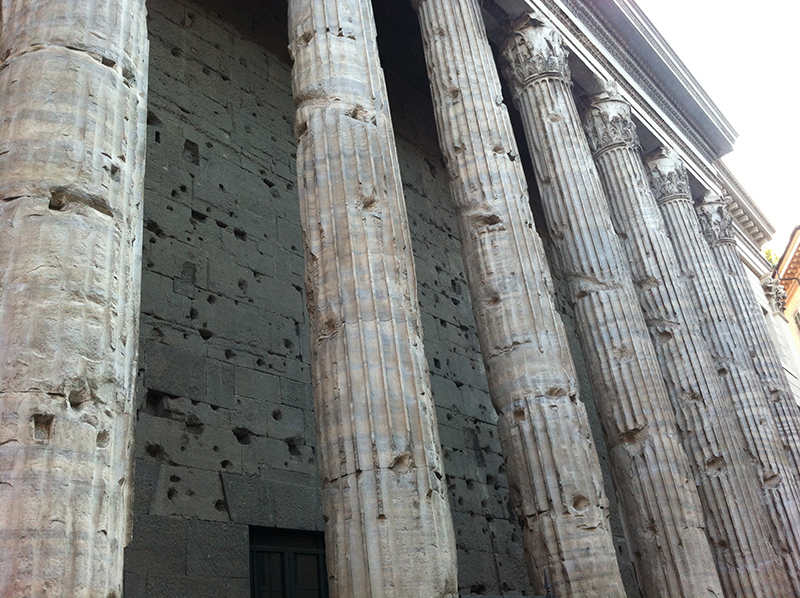Who Were the Gauls?
The Gauls were, generally speaking, the ancient Scottish. They were not Asterix and Obelisk, and they were not French, although they occupied the area for a while. They fought their way to Rome in 390BC and burned it to the ground. After several months of playfully (in their minds) terrorising the Romans, the Gauls left with a bucket of gold the Romans gave them. They also left with the promise to settle above the Po river – and no farther south.
The Romans were afraid of them, because the Gauls fought nude in the winter time. Mediterranean countries don’t fight in the winter – let alone, nude. In fact, in the Hebrew/Christian scriptures it states, “…in the spring, when men go to war …” (2 Sam. 11:1).
 Etruscan Interpretation of a Gaul.
Etruscan Interpretation of a Gaul.
Oh, and they painted their faces blue and dyed their hair white and let it grow long – they were so impressive (i.e., terrifying), the Etruscans actually changed their idea of what gods were like – from happy, benevolent ones, they added an evil god with wife. Their names? Mantus and Mania … of course …
The Gauls and Alexander the Great
Later on, the Gauls began to hear of a great conqueror over in the East – Alexander the Great. The Gauls were impressed with the rumours, and decided that they needed to see who was this great conquering guy, so they floated and cavorted down the Danube, and eventually found him.
Then, they started laughing – at how short Alexander was – in comparison to themselves.
Alexander invited them to leave, and the Gauls instead founded a colony in the centre of his real estate – Galatia – pretty much the centre of Turkey.
Over in this new world they continued their game of terrorising anyone within their reach, while beginning to acclimate – they gradually lost the blue dye and hair colouring tricks. It wasn’t until Attalus of Pergamum in 238BC that the Gauls were subjugated.
The Fall of the Gauls
Attalus had won a tremendous victory, and sought to commemorate it with a series of bronze statues in Pergamum. His monument originally had 6 bronze figures – Gauls dying in one way or another. The centre statue was the Suicide Gaul with wife, that we see depicted in the video.
 Dying Gaul at the Capitoline Museums
Dying Gaul at the Capitoline Museums
The type of marble used for this statue was very special. It is called Docimian marble, and the quarry is located in Turkey, close by the Phrygian (pavonazzetto) quarry. This has led historians to conclude that this statue was made while the bronze originals still existed. The Dying Gaul at the Capitoline Museum is made of the same marble. This theory is possible, as Ancient Romans preferred Pentelic or Parian marble for their sculptures.
Video of Dying Gaul at Palazzo Altemps, in Rome.
This statue group is named after the Ludovisi family because it suddenly showed up in their inventory list in the 1623. Presumably found on their property, the real estate had been the villa of Roman historian Sallust in the 1st century BC. The Dying Gaul was also found there.
One can still see traces of colour in their hair and clothing. These 2 figures have also been heavily restored. The shafts that you see extending out from the buttox of the male figure are support beams – marble is actually very fragile. Normally, those beams are removed once the statue is put in place, but in this case it was considered a better choice to have them remain.
By the way, let me politely add that when viewing the specifically ‘male’ part of the marble body, may I suggest to not saying anything like, “oh, that’s big”, or “oh, that’s small”. The ‘male’ aspect of the sculpture is not intended to be ‘big’ or ‘small’ – it is just representative. Just as you won’t see any incredibly busty women statues in Ancient Rome, you won’t find anything extraordinary on the male statues – they have it, they sculpt it.


